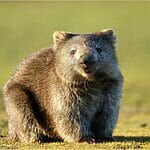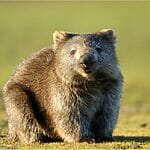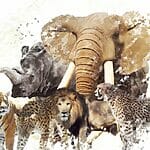We’ve all been melted in the past by the adorable creatures that are wombats. They’re incredibly fun to look at, but many of us don’t know very much about them.
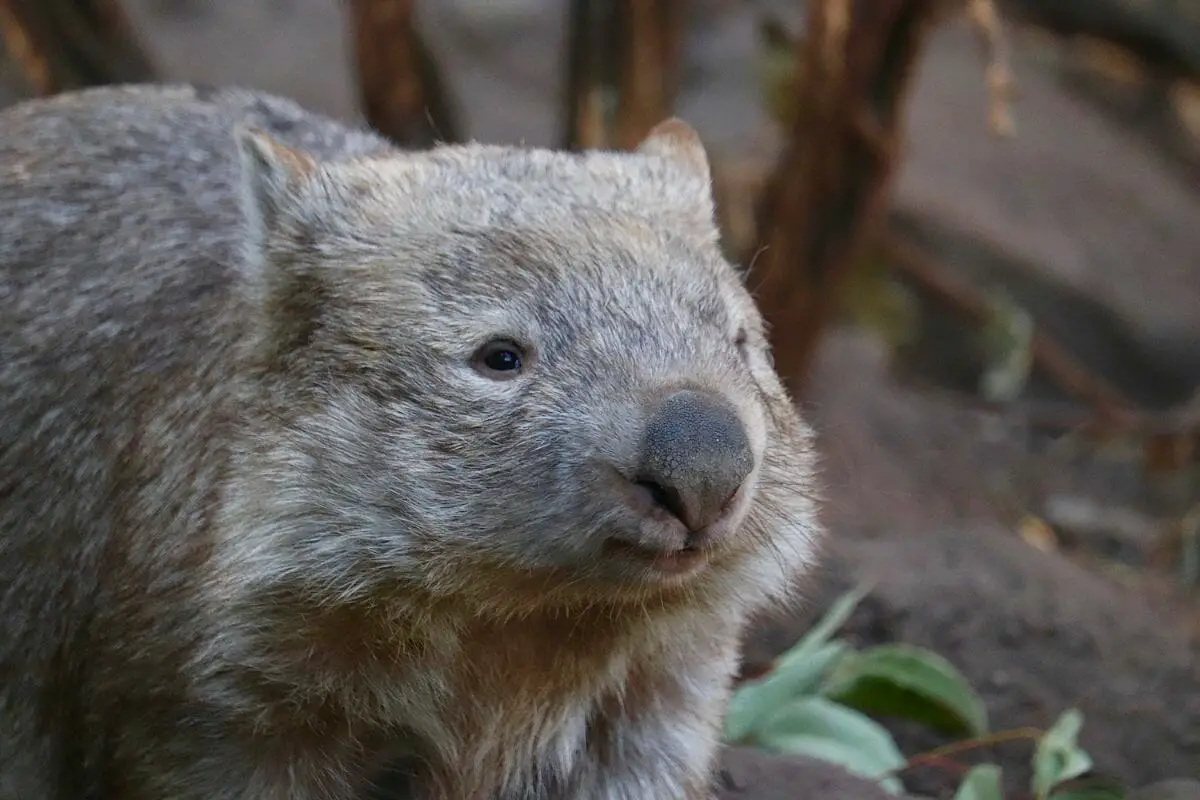
As well as being very cute, wombats are also fascinating creatures that can be very entertaining to learn about.
If you want to know more about wombats, including what kinds of foods they enjoy eating, keep reading, because we’ve got all the answers.
Are Wombats Omnivores?
Before we take a further look at this question, first let’s take a look at what exactly an omnivore is.
Omnivores are animals that are classified as consuming both plant based foods as well as animals. They are neither carnivorous or herbivores exclusively.
So, are wombats considered to be omnivores within the animal kingdom? The simple answer is no, wombats are not omnivores. Although they have a wide and varied diet, this doesn’t mean that they enjoy consuming other animals.
Wombats are classified as being primarily herbivores. They exclusively feed on vegetation, which provides them with all of the nutrients they need to survive.
They eat a whole host of different foods, including plants, shrubbery, herbs, bark, and grass.
It takes them a full 14 days to digest the meals that they have eaten.
What Do Wombats Eat?
As we mentioned before, wombats are not classified as being omnivores, because they do not have the required biological skills they would need to kill prey.
Instead, they enjoy feasting mainly on wide spans of grassland, the most ubiquitous one being ‘snow grass’, which is native to Australia.
They also like to feed on other types of grasses, such as kangaroo grass and wallaby grass.
These are widespread across Australia and serve as a constant source of food for the wombat. Because these grasses are all resistant to fire, there’s no fear of lack of food for the wombat.
As well as this, wombats are known to actually eat tree bark too, along with tubers, tree roots, and domestic crops.
When Do Wombats Eat?
Chances are that if you’re headed to Australia and are hoping to come across some wild wombats on your travels, you will struggle to spot these little creatures during the daytime.
This is because they mainly emerge from their habitats in order to feed during the night.
This does, however, vary depending on which season you’re planning on visiting Australia.
If you’re headed there during the cooler, winter months, you’re more likely to spot one of these creatures during the day.
This is because it’s much warmer for them to emerge during the day in winter months.
They will typically travel a distance of around 1 mile to find the best food.
They will cut through their food using their incredibly sharp teeth, which make great tools for cutting through denser items such as tree barks.
When eating grass, they will slice through it first, before moving on to chew. Chewing through denser items also helps to keep the wombat’s teeth at a reasonable length.
As wombats grow, so do their teeth. In fact, wombat’s teeth will never stop growing. Therefore chewing and cutting tree back and other hard surfaces helps to naturally trim them.
What Do Infant Wombats Eat?
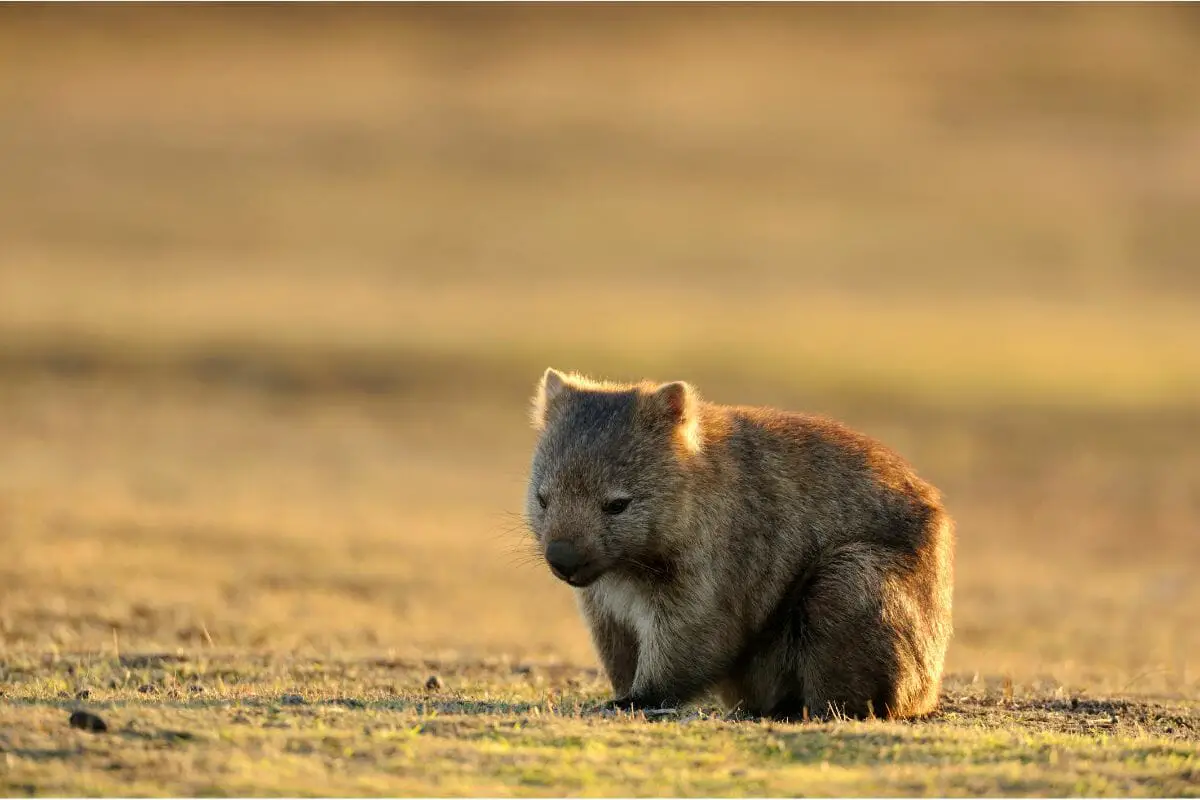
When we think of animals that live in their mother’s pouches when they are young, we typically only think of kangaroos.
This is a common misconception however, and all marsupials live in their mother’s pouches until they are old enough to venture outside.
In fact, all marsupial babies are known as ‘joeys’, not just kangaroos. So when referring to infant wombats, it is appropriate to use the term ‘joey’ to describe them.
Infant wombats, or joeys, will typically be the size of a small peanut when they are born, because the mother’s pregnancy is relatively short.
After they are born, they will somehow crawl up their mother’s stomach into the pouch, where they will live for the majority of their development.
The joey will not feed on shrubbery and vegetation like the adult wombats, but will instead latch on to one of its mother’s teats, which will act as a form of sustenance and nutrition for them for the next 12 months.
Where Do Wombats Live?
If you’re wondering whether or not wombats are exclusive to Australia, the answer is yes, they are only found within this country.
There are two different varieties of wombat in existence, and the specific type of living conditions they like vary based on their species.
There is a variety of wombat called the hair nosed wombat, which is probably the one we most typically think of when we hear about these creatures.
The hair nosed wombat enjoys living in dry conditions, where it is able to steer clear of water. These wombats can be found living in the south of Australia, where it is incredibly dry.
The common wombat however, much prefers living in wet conditions, where it can be near water.
You’ll typically find them near mountain slopes and ridges, where it is incredibly damp and surrounded by forestry.
Do Wombats Have Predators?
Wombats don’t really have very many predators, but there are some out there. Their main predators are Tasmanian devils, eagles, foxes, and wild dogs.
When they are threatened, they will race back to their burrows, where they will remain until the coast is clear again.
Final Thoughts
To sum up, wombats are not classified as omnivores because they don’t feast on other animals. They have not developed in order to hunt prey, and instead prefer to feed on grasslands, shrubbery, tree bark, and herbs.
Joeys will feed on their mother’s milk for the first 12 months of their life.

